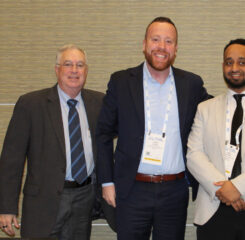During the Senate Finance Subcommittee on Health hearing, “Aging in Place: The Vital Role of Home Health in Access to Care,” Subcommittee Chairman Ben Cardin (D-MD) opened the hearing by sharing the interest of many Americans to age at home. He noted that a lack of coordinated policy created more costly, less coordinated care which is detrimental to the health of older adults and urged the Committee, which has jurisdiction over Medicare, Medicaid, and tax policy to work towards a coordinated long-term care strategy.
Cardin also noted that home health care is facing many challenges including workforce shortages from the pandemic, reimbursement structures with complicated formulas, and lack of incentives for creating access especially to non-medical benefits like home health aides. Ranking Member Steve Daines (R-MT) concurred with Cardin on the critical and increasing importance of home health care in the Medicare program. Normal issues for all agencies like access to care, transportation, and workforce are all exacerbated in rural areas – and Montana has a large aging population with 20% of residents who are over age 65.
Senate Finance Committee Chair Ron Wyden (D-OR) also spoke about the importance of care in the home and community and importance of working on these issues in a bipartisan manner.
The hearing included discussions relevant to LeadingAge members in four key areas, rural providers, defining access to home health care, home health payments, and home health and Medicare Advantage.
Rural Providers
Witness Carrie Edwards, a nurse, and director of home care services for Mary Lanning Healthcare, a nonprofit health system in Hastings, Nebraska shared her experience over her career in the field and the drastic changes her rural agency had faced in the last years due to changes in payment policy. Ms. Edwards shared that the combined impact of the Patient Driven Groupings Model (PDGM) and CY2023 home health cuts have caused her to drastically shrink their service area. Previously, the agency served 13 counties in rural central Nebraska, but now, her agency only serves one county. Edwards shared when her agency made the decision to reduce their coverage area, they went from serving 42,000 beneficiaries to serving just 7,000 seniors. When asked by Senator Debbie Stabnow (D-MI) what happened to the beneficiaries in the counties they left, Ms. Edwards said that many patients, especially those with high needs, are going without care.
Dr. Tracy M. Mroz, an Associate Professor of rehabilitation medicine at the University of Washington, shared that in her research findings disparities in access to home health care were considerable and especially prominent in rural communities. Across home health agencies many may refuse a referral, or delay admission of a patient, and even reduce visits due to “windshield time” or the time it takes clinicians to get to the individual being served. These problems are particularly acute in rural areas.
Mroz’s research found only 60% of rural patients referred to home health services actually received care. Mroz also noted concerns that the expanded Home Health Value Based Purchasing (HHVBP) demonstration could put rural agencies at risk of closing due to their poor-quality improvement due to the populations’ served and these closures would perpetuate the access issues.
When Daines asked about the rural add-on payment’s value and whether or not the most recent 1% bump in payment was sufficient, Mroz responded that 1% was not sufficient to ensure access and provide services once a patient was admitted. In her research, the rural add-on had great potential to increase care provided but added that rural America was not homogenous and targeted policies must take that into consideration. In his testimony, Dr. David C. Grabowski, a health services researcher and former Medicare Payment Advisory Commission (MedPAC) commissioner, urged the subcommittee not to solve payment issues for rural providers through overall payment system changes but look at payments like the rural add-on which are more targeted. For instance, when it comes to covering the cost of the workforce, he believes current payments should be more than adequate to cover wages however, a targeted policy for different labor markets may improve access.
Many nonprofit and mission driven LeadingAge members serve rural communities and have stories similar to Ms. Edwards. LeadingAge has consistently advocated for the continuation of the rural add-on payment. LeadingAge has also urged CMS to allow post-acute care providers like home health, hospice, and skilled nursing homes to have access to the same wage index adjustments as hospitals, which are competitors for staff. LeadingAge agrees that exploring targeted payment policy solutions is important but that we need to consider payment adjustments across geographies—including but not limited to rural areas.
Defining Access to Home Health
Multiple witness noted that MedPAC’s defined adequate access as 98% of beneficiaries living in a zip code with at least two home health agencies, but all emphasized that supply does not equal access. When Daines pressed on what would be a better indicator, Mroz shared that looking at rates of referral refusal may be a better indicator. Additionally, Mroz said hospitals should be reporting their rates of referral and referral rejection, though this measure could become more difficult as hospitals stop making referrals due to the rate of rejections.
In a similar line of questioning, Senator Todd Young (R-IN) asked Grabowski if home health agencies were routinely identified for patients discharging from the hospital. Grabowski said yes, but the rate of refusing referral was unknown. Seniors and families are able to identify quality providers using Home Health Compare but they don’t necessarily know if that agency is accepting patients. Grabowski called for a comprehensive evaluation of home health access and agreed with Mroz that hospitals should be helping individuals discharge safely and therefore should be providing information to patients and families about home health placements.
There seemed to be a lot of agreement, including from Grabowski who is a former MedPAC commissioner, that the definition of access in home health care is insufficient and incomplete. LeadingAge will continue to work with members on how they measure rejection referral rates and other ideas around what access should look like to share with interested members in follow up.
Another unique issue regarding access to services was presented by Judith Stein, executive director and founder of the Center for Medicare Advocacy, in Willimantic, Connecticut. She stated that her main message for the subcommittee was enforce the laws that already exist for home health care. Stein shared that current home health care law is incorrectly understood as a short-term benefit by the Administration and providers. In her opinion, one of the most glaring issues in the incorrect interpretation of the law is around home health aides. The law allows individual access to 28-35 hours weekly of aide services, but increasingly this care is shifted to families. The incorrect interpretation of the benefit means millions of Americans do not have access to guaranteed benefits under the law. LeadingAge commented on CMS’ RFI related to aides in home health and underscored the barriers that exist to providing aide services including payment, workforce, and oversight – which were many issues mentioned by Ms. Stein.
Home Health Payments
The home health payment system was at the center of conversations during the hearing – both discussions about CMS’ proposal for CY2024 and the impact of PDGM overall. Bill Dombi, the president and CEO of the National Association of Home Care and Hospice, shared data on the home health benefit’s trajectory. In 2011, 3.5 million Americans used home health services, averaging 36 visits per year. Today only 3 million Americans have used home health and visits have dropped to a yearly average of 25.
Dombi pressed Congress to pass the Preserving Access to Home Health Act (S.2137, H.R. 5159) which would repeal the permanent and temporary adjustments in the home health payment system and mandate a comprehensive analysis from Congress on what is happening to the benefit. In response to questions, Dombi noted there is an intimate relationship between payment and services and the current proposed 5.635% cut, along with the threat of recoupment of perceived overpayments, has led many providers to be very concerned. Dombi added that CMS made an inflation forecasting error of $870 million in rates for 2020 and 2021 that have been permanently added to all future payment adjustments meaning the reductions will only be more devastating over time. When Senator Marsha Blackburn (R-TN) pressed Edwards on the impact of the proposed cuts being finalized, she shared that her rural agency would most likely need to close and that they were already making do with the bare minimum.
Stein noted, in response from a question from Cardin on making the benefit more functional for long term needs, that PDGM creates disincentives for care by paying more for the first 30 days of service and paying more for people referred from hospitals than from the community. Adding that the payment needs to be revised so people who are avoiding hospitalization by staying at home with support are paid more.
Grabowski’s said in his testimony, based on MedPAC’s data, fee-for-service payments for home health were adequate to ensure access. In 2023, margins for home health agencies were at an all-time high of 24.9%, and even rural agencies had margins of 29%.
Additionally, Grabowski cautioned the subcommittee about taking actions to change PDGM. Since the payment system as implemented only a few months before the pandemic, he believes it is difficult to determine the impact of the change on home health providers and it could be several more years before the impact is known. He urged the committee to consider the broader long term care system including support for family caregivers, home and community-based services through Medicaid, and expanding models that integrate Medicare and Medicaid for dually eligible individuals.
LeadingAge members’ experience is not consistent with MedPAC’s margin analysis. The cuts implemented in CY2023 and proposed in CY2024 are devastating to nonprofit, mission driven providers like Edwards. We support and advocate for the Preserving Access to Home Health Act (S.2137, H.R. 5159) which would prevent the damaging cuts and require CMS to reevaluate the payment methodology.
Home Health and Medicare Advantage
Cardin asked for more thoughts on the role of home health in Medicare Advantage. Dombi shared that home health has always been a strong partner in Medicare fee-for-service, which is exemplified in HHVBP program which saved Medicare billions by keeping beneficiaries out of high-cost settings like hospitals and nursing homes. MA plans need to recognize that value though payment and encouraging utilization.
Stein also shared growing concerns about Medicare Advantage plans fighting tooth and nail to limit the number of visits allowed. Dombi shared that for many agencies with margins in Medicare, the margins are being used to subsidize care for Medicaid and Medicare Advantage patients.
Another issue mentioned by Edwards was whether the available providers in the counties her agency left were contracted with the beneficiaries’ Medicare Advantage plan. If they were not, many beneficiaries would be left with no options. Grabowski add that recent studies have shown Medicare Advantage patients often receive fewer visits and from lower quality agencies leading to disparities.
LeadingAge has been a strong advocate for changes under the Medicare Advantage system. We hear from all providers that the contracts they are given pay less than traditional Medicare and prevent beneficiaries from receiving the full benefits of home health. We will continue to advocate for changes to regulations and expectations for Medicare Advantage plans.

 Shutdown Week Three: Impact of Ongoing Closure on Affordable Housing
Shutdown Week Three: Impact of Ongoing Closure on Affordable Housing Colleagues on the Move, December 17, 2025
Colleagues on the Move, December 17, 2025


